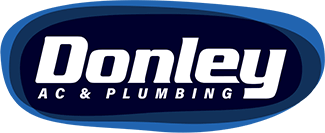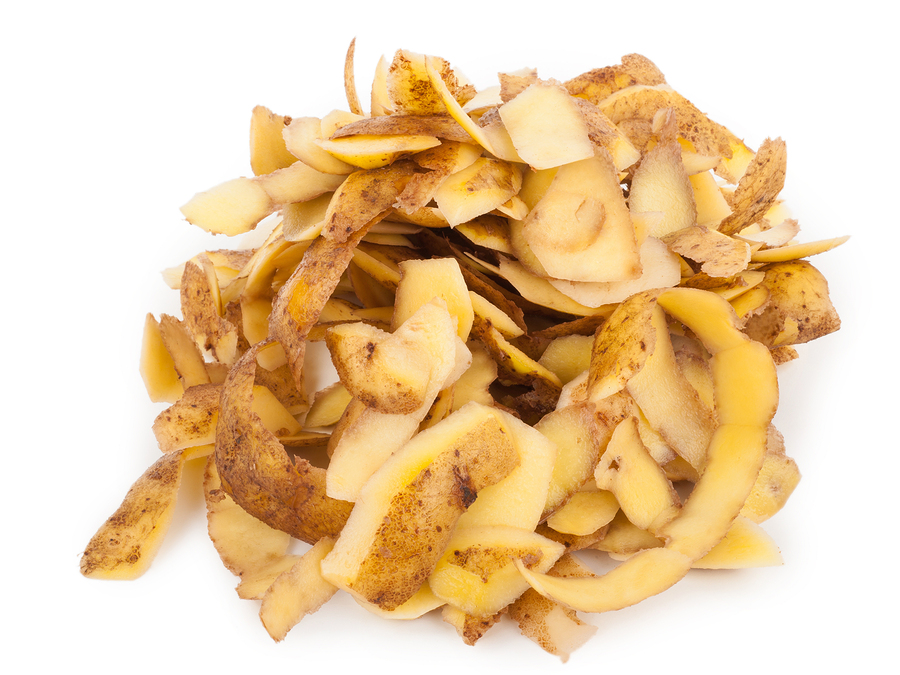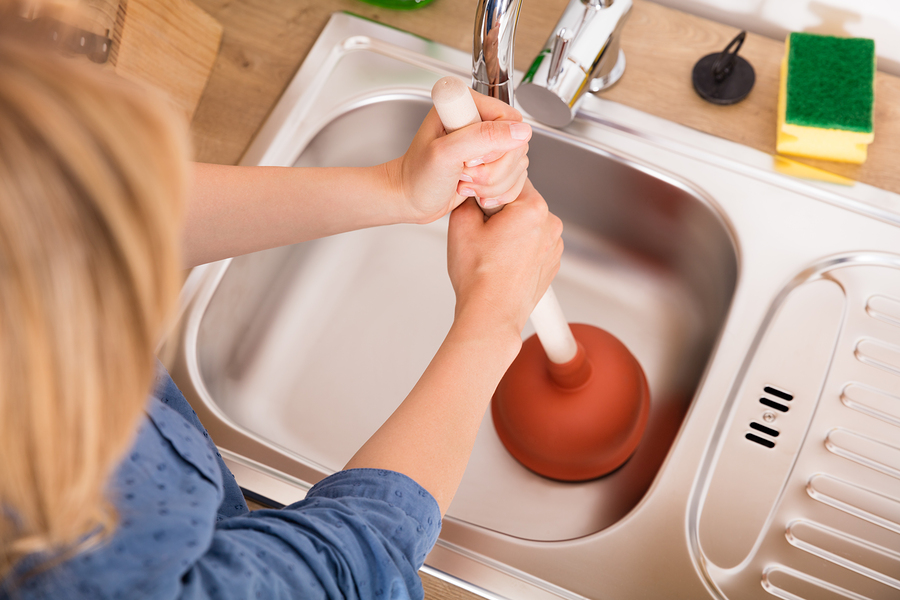Tips On How To Unclog Drains
Date: December 1, 2017
ARTICLES
TIPS ON HOW TO UNCLOG DRAINS
NOV 30, 2017
Did you know that up until very recently, people in Taiwan would enter the restroom, attend to their ummm … business and then — rather than flushing it — throw their toilet paper into a small waste basket found next to essentially every toilet in the country? Pretty wild stuff, huh? It turns out that up until late last year when the country’s equivalent of the EPA began recommending people flush, this practice was used because it is assumed that the plumbing in Taiwan was just not ready to handle toilet paper without some serious issues. Luckily, here in Phoenix (and the whole of the United States), it is essentially a universal truth that toilet paper (or at least a reasonable amount) can always be flushed with impunity. However, even the most modern plumbing system known to man can still fall victim to dastardly clogs from time to time and under the right circumstances.
THE 411 ON CLOGGED PLUMBING PIPES
Let’s get into brass tacks about all of the other things that may cause clogged plumbing pipes and how to unclog drains should the situation arise. We have established that we are incredibly fortunate to have a well-established protocol dictating that spent toilet paper is to be flushed, but did you know that there are other things you may be sending down your plumbing pipes that can lead to clogs and other plumbing problems?
WHAT CAUSES CLOGGED PLUMBING PIPES?
Don’t flush THAT
While toilet paper is all well and good, you obviously don’t want to be using too much of the stuff. Anyone who has ever potty trained a toddler can attest to this. But there are some products that should never be flushed in any quantities:
-
Moistened wipes like baby wipes
-
Diapers
-
Cotton swabs
-
Dental floss
-
Maxi pads
Now that we have covered what not to flush down the toilet, let’s move on to other plumbing fixtures in the home.
IMPROPER FOOD DISPOSAL
Having been in the plumbing business for decades, you would be shocked at some of the weird stuff we have found hanging out in peoples’ plumbing pipes after they sent it down the garbage disposal – seriously, we may write a whole other blog post on the topic sometime in the future. But there are also some incredibly common and seemingly innocuous offenders that end up clogging kitchen sinks because it is not commonly known that they shouldn’t go down the garbage disposal.
So, in case you didn’t know, here are some items you may very likely be putting in the garbage disposal that you should start disposing of in the trash can, lest you end up with a clogged kitchen sink:
-
Cooking oils
-
Celery
-
Coffee grounds
-
Egg shells
-
Potato peels
-
Rice
Great. We’ve got a definite checklist of things you will not be sending down the kitchen sink. But what about drains in bathroom sinks and showers?
AVOID A HAIRY SITUATION
Because of the nature of their use, it is impossible to entirely eliminate hair going into bathroom drains. Whether it is a lady’s long hair after an intense deep conditioning treatment or a gentleman’s beard trimmings after a successful No-Shave November, some hair will end up in the drains of even the most vigilant groomers. Read this article about ways you can mitigate the amount of hair that goes down the bathroom sink after shaving and consider installing mesh drain covers or something similar. Also, keep in mind that hair typically works in concert with soap scum to clog your drains. Switching to gel or liquid body washes as opposed to bar soap can help reduce the amount of soap scum, thereby reducing your chances of clogged plumbing pipes.
THE BEST WAYS TO UNCLOG A KITCHEN SINK
The way you will go about clearing a clog will depend on the location of the blockage. Luckily, if you are dealing with a kitchen sink that is clogged and none of your other plumbing fixtures seem to be affected, there is a good chance that your blockage is very close to the drain. To unclog a kitchen sink in this scenario, an old-fashioned plunger will do the trick. After successfully using a plunger to unclog a kitchen sink, flush some hot water down the drain for good measure.
If the plunger didn’t work to unclog your kitchen sink, turn the water off and use a pipe wrench to remove the trap and see if the blockage is there. Otherwise, the blockage is probably further down and will require some more invasive measures. If you happen to have a pipe snake, give it a whirl to see if it will reach. Otherwise, without consulting a professional, there is no hard and fast way to know exactly how long of a snake you will need, if an electric auger will be necessary or if you are potentially dealing with a much larger problem.
HOW TO UNCLOG A BATHROOM SINK WITH STANDING WATER
The first step to unclogging a sink with standing water is to get the water out of the way so that you can address the clog. If you happen to have a wet/dry vac, now is the perfect time to bust it out. If not, you will need to get creative with a large bowl or bucket, a sponge and possibly some plastic measuring cups.
Once you have cleared the standing water, the next thing you will want to do is use a set of adjustable pliers to remove the nut and lever arm holding your bathroom sink stopper in place. There is a very definite chance that the blockage causing your issues is a mass of hair and soap scum at the bottom of the stopper. Furthermore, having the stopper out of the way means that you can also inspect the immediate drain pipe with a flashlight for any clogs. However, be forewarned that the stopper is likely to be really gross and you will probably want to wear rubber gloves when you are handling it.
If removing the stopper does not allow you to take care of a blockage, it is further down the line. As with the kitchen sink, you can remove the trap to see if there is a clog you can clean out there. Otherwise, it may be necessary to call in professional reinforcements.
Keep in mind that many of the harsh drain cleaners on the market can be bad for your pipes. Also, even the strongest of chemicals may not actually address the root cause of your clog, but rather temporarily fix some of the symptoms you are noticing first hand.
HOW TO UNCLOG A SHOWER DRAIN WITH STANDING WATER
To unclog a shower drain with standing water, you will first want to take care of the standing water as with the process for unclogging a bathroom sink.
Unfortunately, you options for dealing with a clogged shower drain yourself are somewhat more limited than the sink. There is no P-trap to easily access. If your bathroom drain has a stopper like the bathroom sink, you can remove that to try to take out a clog that is near the top of the drain. If you have a flush drain, you can try flushing a cup of boiling water down the drain, followed by half a cup of baking soda, then a 2 cup 50/50 mixture of boiling water and vinegar. Let that mixture sit and fizzle in the drain for at least ten minutes before flushing it out with another cup of boiling water.
CONTACT THE PLUMBING SUPER HEROES
After that, check the drain to see if it is working appropriately. If not, consider calling in a plumber from Donley Service Center — especially if this clog is a recurring problem.
Whether you want advice on the type of drain solution to try yourself (based on the type and age of your pipe) or someone to bring in state-of-the-art technology, industrial tools and decades of experience, we are here. Same-day appointments are available and we are open 24 hours!



